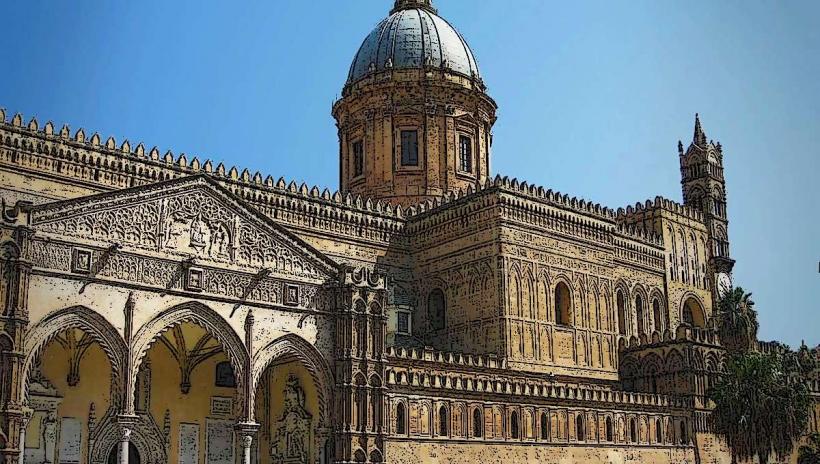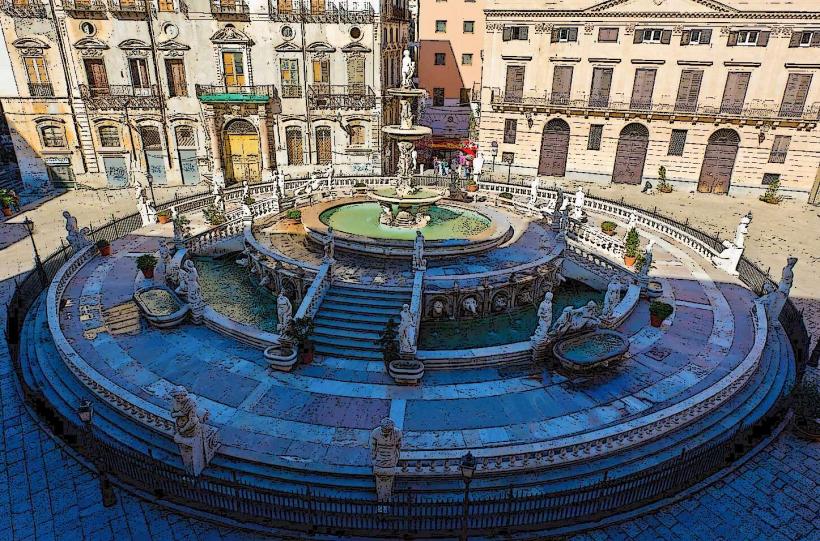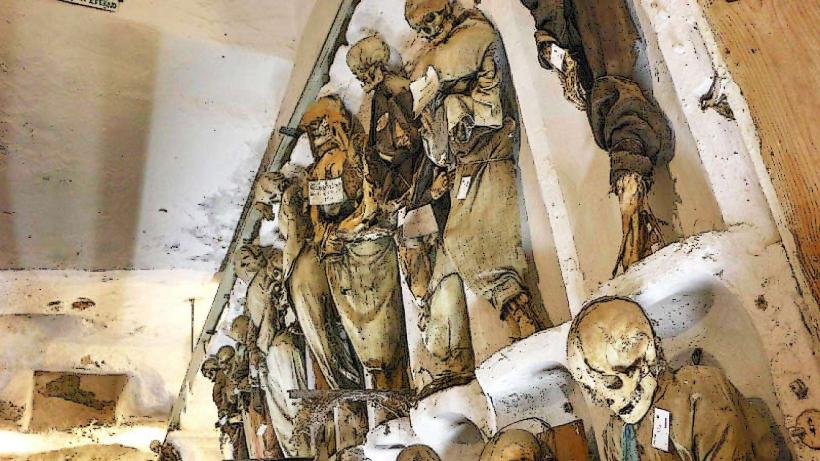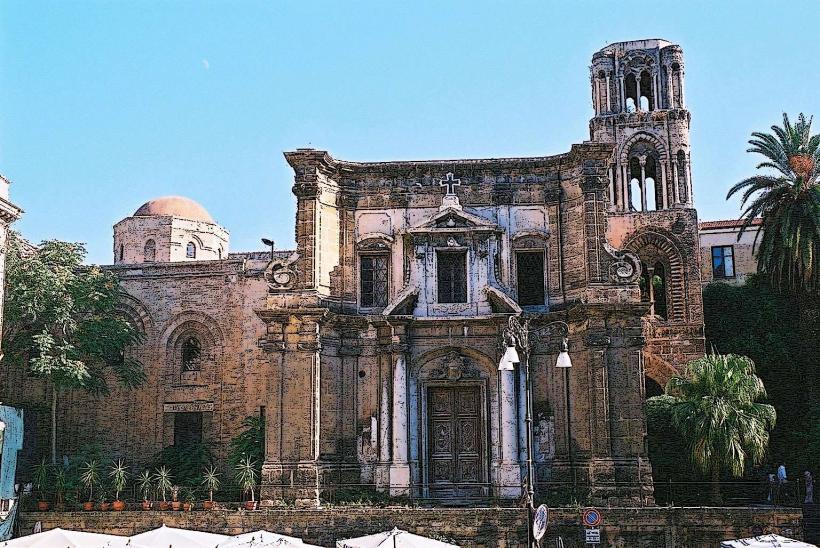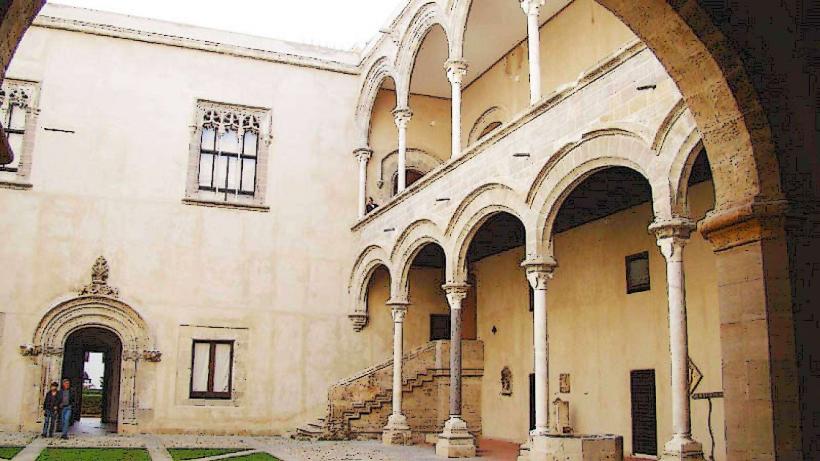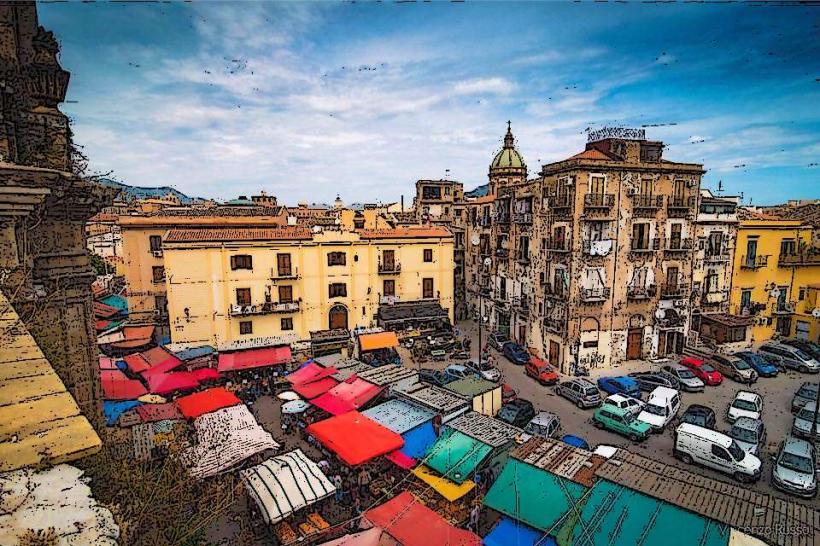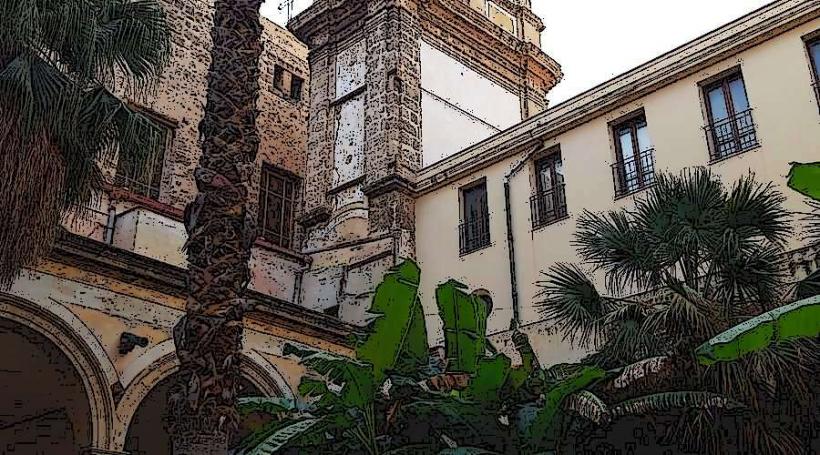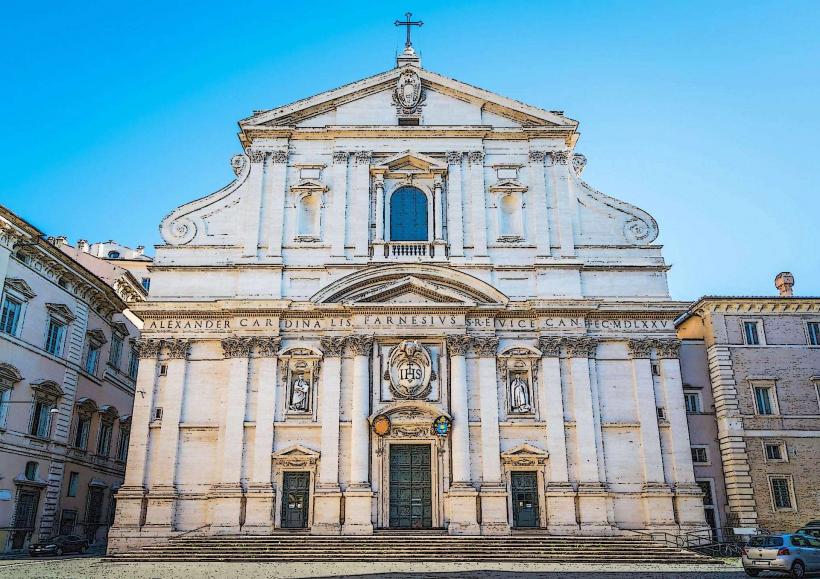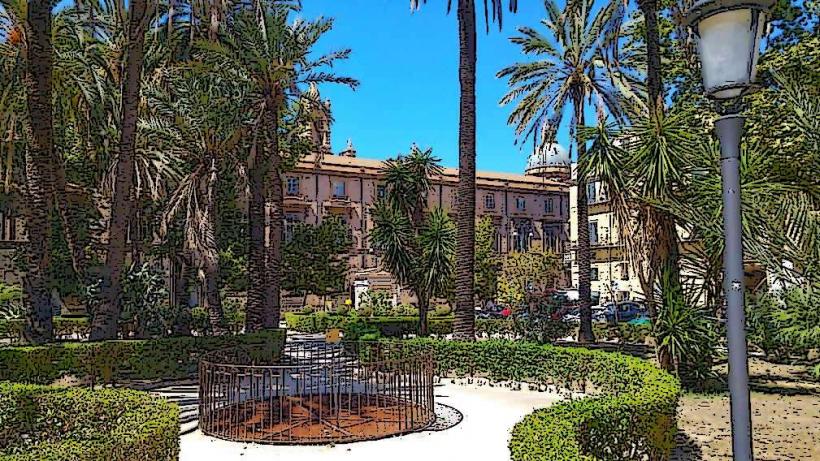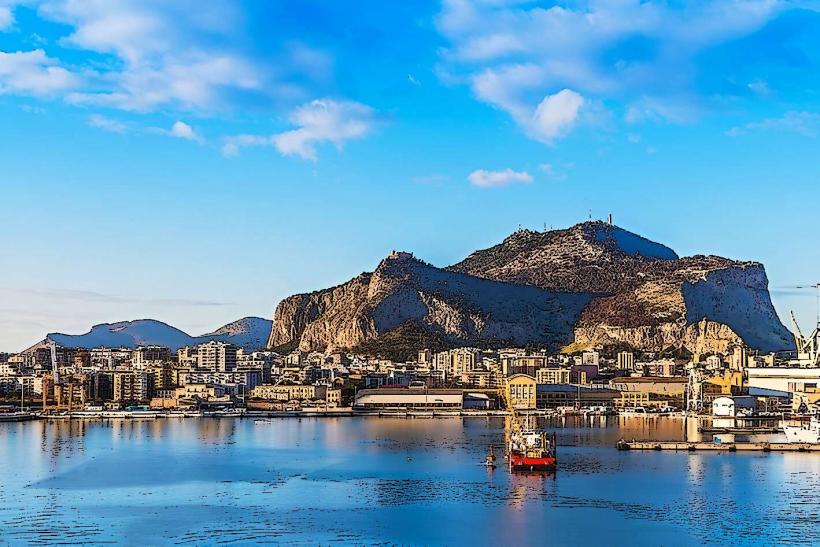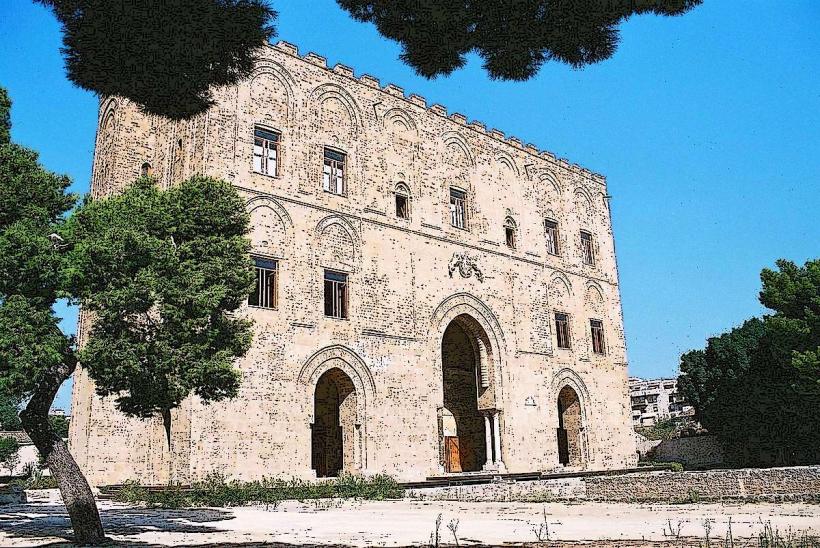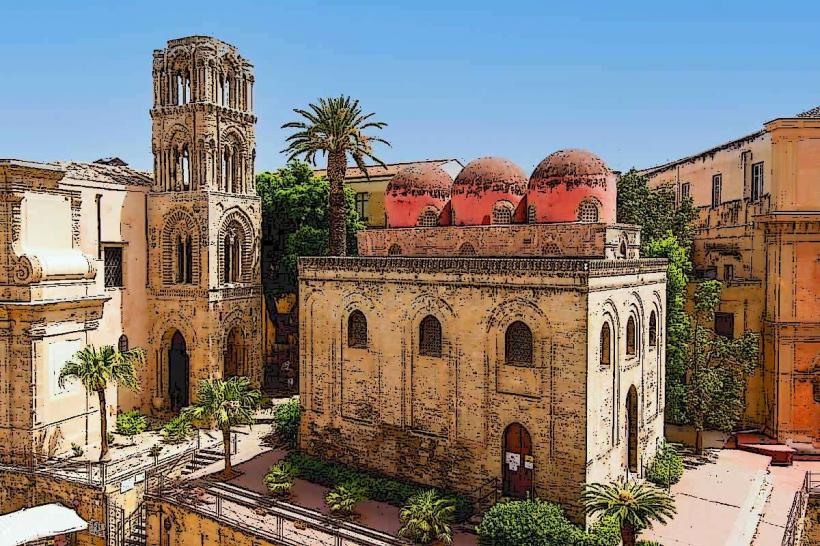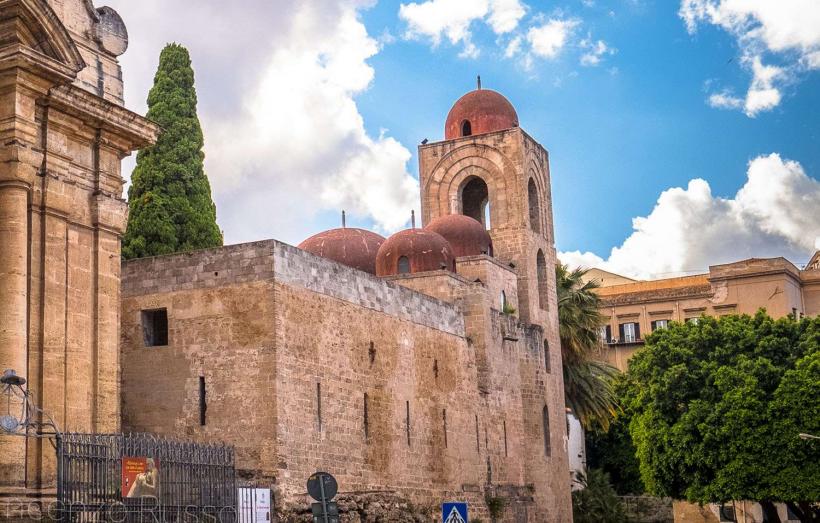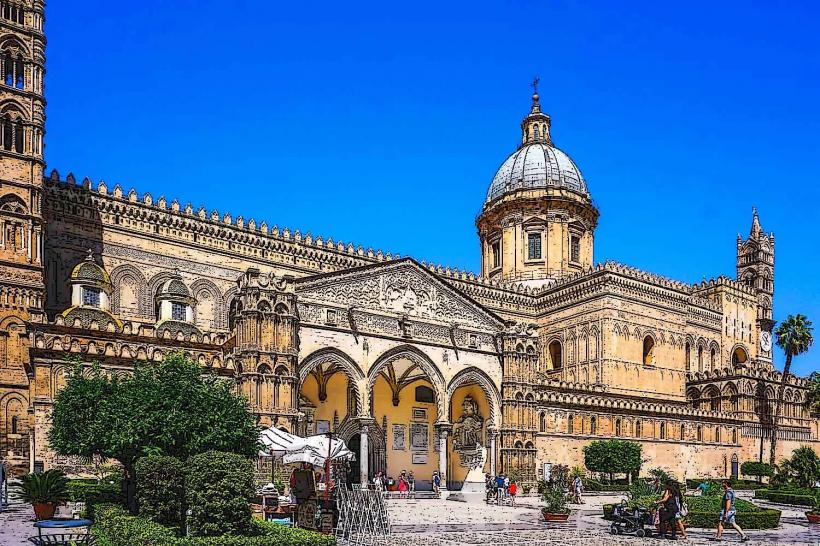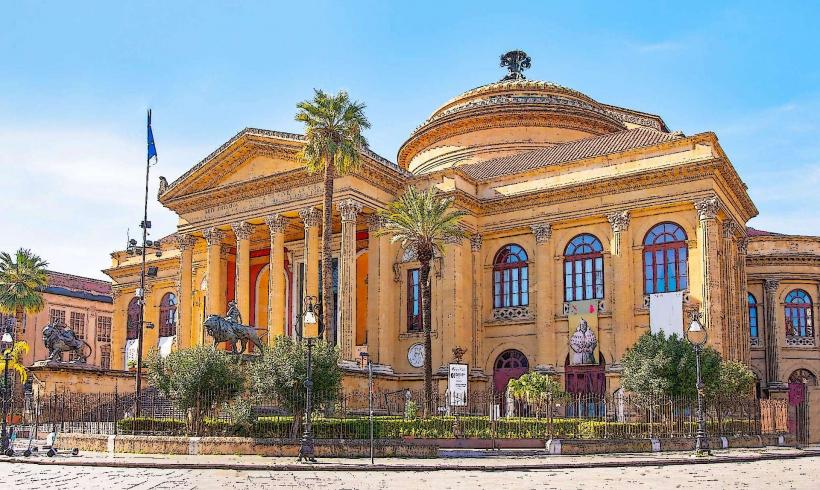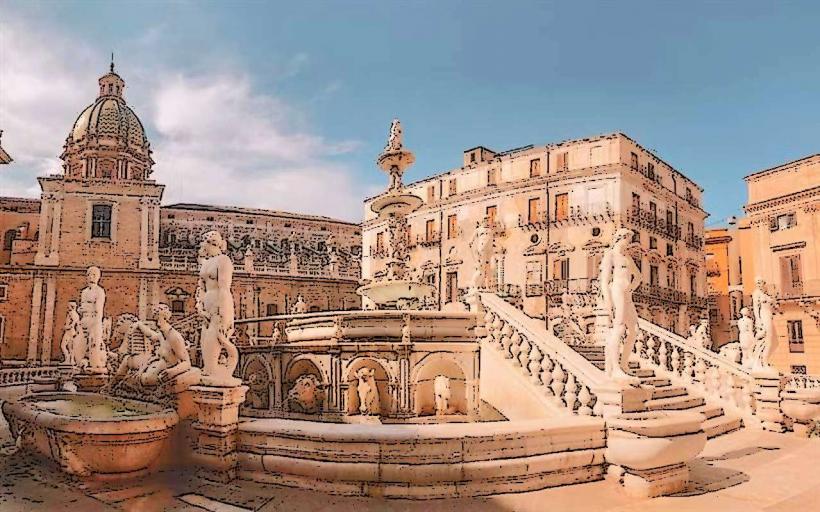Information
Landmark: Palazzo dei NormanniCity: Palermo
Country: Italy
Continent: Europe
Palazzo dei Normanni (Royal Palace of Palermo), also known as the Royal Palace of Palermo, is one of the most important and historically significant landmarks in Sicily. This majestic palace, located in the heart of Palermo, is a symbol of the island's rich cultural and political history. It has served various rulers, from the Arab emirs to the Normans and later the Spanish, and it blends architectural styles from different periods.
Overview and Historical Background:
Origins and Early History: The palace has origins dating back to the 9th century during the Arab rule in Sicily. The structure was originally built as a fortress by the Arabs, who used it as a seat of power. It was later expanded and renovated by the Normans in the 12th century, becoming their royal residence.
The palace's location, on the site of earlier buildings, is strategically placed to oversee the city of Palermo and its surroundings. The original fortress was built on a hill that gave it commanding views of the surrounding area, a characteristic that would remain central to its design.
Norman Renovation and Influence: When the Normans took control of Sicily in the 11th century, under the rule of Roger II of Sicily, they transformed the existing Arab fortress into a lavish royal residence. Roger II and his successors expanded the palace, creating an opulent complex that included beautiful gardens, courtyards, and religious spaces. This period saw the addition of the Palatine Chapel (Cappella Palatina), one of the highlights of the palace and a masterpiece of Norman architecture.
The Norman Kings used the palace as their political center, and it became the heart of their royal administration.
Architectural Styles: The Palazzo dei Normanni is an excellent example of a mix of different architectural styles:
- Arab-Norman: The palace combines elements of Arab architecture, such as intricate mosaics and stucco work, with Norman elements like sturdy stone walls and vaulted ceilings. The palace is one of the finest examples of the Arab-Norman style that was unique to Sicily during the Norman period.
- Byzantine: Elements of Byzantine art, especially in the mosaics, were integrated into the palace during the Norman renovation.
- Baroque and Neoclassical: Later additions to the palace included Baroque decorations, particularly in the interior, as well as Neoclassical modifications during the Spanish rule.
The Palatine Chapel (Cappella Palatina): The Palatine Chapel, located within the palace, is one of the most remarkable features of the Royal Palace. Built in the mid-12th century by Roger II, the chapel is a stunning fusion of Byzantine, Norman, and Arab styles. Its golden mosaics, which depict Biblical scenes, are particularly famous and demonstrate the artistic achievements of the time. The chapel also features intricate arabesque designs, as well as a wooden ceiling in the Islamic style.
- Mosaics: The mosaics in the chapel are some of the best-preserved examples of Norman and Byzantine religious art. They cover the walls and the apse, depicting saints, angels, and scenes from the life of Christ.
- The Ceiling: The ceiling is a masterpiece of Islamic craftsmanship, with intricate woodwork and decoration.
Later Modifications: After the Norman period, the palace continued to serve as a royal residence under different rulers, including the Hohenstaufen, Aragonese, and Spanish. During the Spanish rule in the 16th century, the palace was expanded and underwent Baroque modifications, especially in the interior. The Spanish Hall and gardens reflect the grandeur of this period.
Role as the Seat of Power: For many centuries, the Palazzo dei Normanni was the seat of the kings and rulers of Sicily. The King’s Court met within the palace’s grand halls, and it became the hub of political, military, and religious power in Palermo.
- The palace is famous for its Cappella Palatina, as well as for the Norman royal apartments, which reflect the luxurious lifestyle of the rulers of the time.
- The palace has also served as the seat of the Sicilian Parliament since the 14th century, and it continues to house the Sicilian Regional Assembly today.
Gardens and Courtyards: The palace features several beautiful gardens and courtyards, some of which were inspired by the Islamic gardens of the Arab period. These gardens are filled with fountains, statues, and greenery, offering a tranquil escape in the heart of the city. The layout of the gardens reflects the Islamic love of symmetry and water features.
Modern-Day Usage: Today, the Palazzo dei Normanni is an important historical and cultural site, attracting tourists from around the world. Visitors can tour the Palatine Chapel, the Royal Apartments, the Spanish Hall, and the many rooms and courtyards that make up this vast and intricate building.
- The Sicilian Regional Assembly is based in the palace, and its legislative functions are carried out in some of the building’s grand rooms.
- The Royal Palace Museum (Museo del Palazzo Reale) houses exhibits related to the history of the palace and the rulers who lived there.
Visitor Experience:
Visitors to the Palazzo dei Normanni can explore the following highlights:
- The Palatine Chapel: Admire the stunning mosaics, the wooden ceiling, and the intricate designs that make it one of the most beautiful churches in Italy.
- Royal Apartments: Walk through the rooms once occupied by kings and queens, with furnishings and artwork from the Norman and later periods.
- Gardens and Courtyards: Stroll through the peaceful gardens that reflect the Islamic influence on the palace’s design.
- Historical Exhibits: Learn about the palace's long history, from its Arab roots to its role as the center of Sicilian power under the Normans and later rulers.
In Summary:
The Palazzo dei Normanni (Royal Palace of Palermo) is a stunning blend of different architectural styles, representing the island’s diverse cultural history. From its origins as an Arab fortress to its transformation into a grand royal residence by the Normans, it remains a symbol of Palermo’s historical significance. The Palatine Chapel, royal apartments, and gardens make it an essential site for anyone visiting Palermo and a key destination for those interested in the rich history of Sicily.

